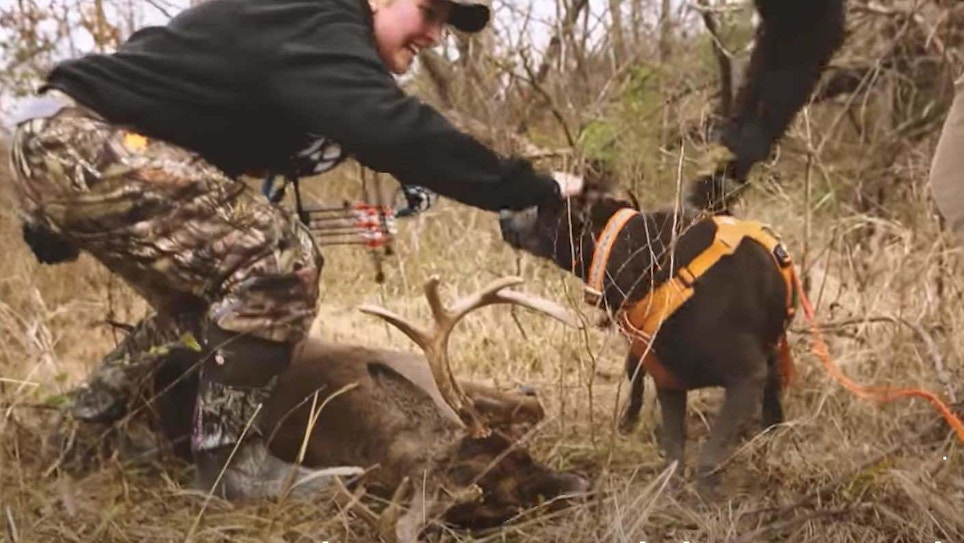The video below from Heartland Bowhunter features Clayton Campbell and his college-age daughter, Addy. Through the years Addy has joined her dad in the field, first tagging along on his adventures, then later hunting herself.
As the video shows, she’s an accurate shot with her Bowtech compound, yet she misses what many archers would describe as a “chip shot” on the close-range doe. When you watch the video in real time, it can be a bit difficult to determine what happened. As I viewed it the first time, it looked to me like the doe jumped the string (i.e. lowered its body to begin fleeing), and Addy’s arrow shaves a few hairs of the doe’s back.
How could she miss so badly?
The answer, I believe, can be found by rewinding the video. Begin the video again at about the 3:00 mark, and hold a pen horizontally on the side of your laptop as shown in the pics below. Place the end of the pen at the top of the doe’s back. Now, alternate quickly between hitting the “play” and “pause” buttons.
When Addy whispers, “You on her?” watch closely as you click between play and pause. You’ll hear the bow fire. Even though the doe appears relaxed, she immediately bends her legs and drops her body toward the ground to begin running. Make no mistake: She’s not deliberately ducking the arrow. She has no idea the sound is a bow firing and an arrow is flying her way. Very simply, the doe’s instincts tell her to flee immediately.
By the time the arrow arrives, the doe has dropped so far that Addy’s arrow clips the top of the doe’s back, shaving a few hairs.
Clayton and Addy don’t discuss the reason for her miss, but it’s clear to me that the doe jumped the string.

Later in the video, Addy is again in the field with her dad, and this time she has an opportunity at her biggest buck to date. Do the pen trick again. As you’ll see, this buck also moves while the arrow is in flight, but he drops nowhere near as much as the doe. If I had to estimate, I’d say the doe dropped at least 10 inches by the time the arrow arrived, and the buck dropped 2 inches. One shot resulted in a close shave, the other a dead deer.
Predicting whether deer will jump the string is very difficult. I recommend you check out my recent article discussing whether it’s better (in terms of avoiding string jumping) to aim at a whitetail with its head up (like the doe in the video below) vs. down (like the buck). You’ll probably be surprised by what wildlife biologist and avid deer hunter Dr. Grant Woods has discovered.
Finally, if you want my opinion and insight on string jumping as it relates to baiting, check out this article. In the video below, I have no idea whether the Kansas doe is standing near bait. That said, it appears likely to me that the Kansas food plot with all the bucks has some bait spilled on the ground. I base my viewpoint on the big buck’s behavior as he approaches. He’s not feeding randomly on the food plot; he has one spot in mind and the other bucks move out of his way. Important note: It’s 100 percent legal to use bait for whitetails in Kansas.






